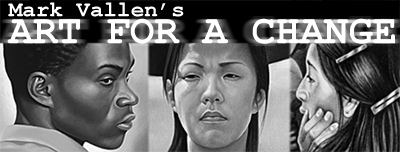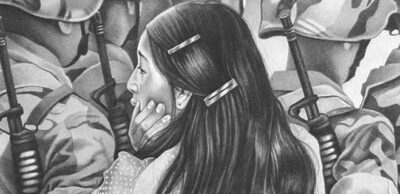Germany’s Art Controversies
In Berlin Germany, the Kunst-Werke Institute for Contemporary Art opened a major exhibition on January 29th, 2005 – Regarding Terror: The RAF Exhibition. Through the works of some 40 contemporary artists working in various media, the exhibit focuses on Germany’s infamous terrorist organization, Red Army Faction (RAF). In the 1970’s and 80’s, the communist urban guerilla group conducted a violent campaign of kidnappings, assassinations, robberies, and bombings that in their view would assure “victory over American imperialism.” RAF attacks resulted in the deaths of 30 people, including major industrialists and businessmen.
Since its inception the controversial exhibit has been a headache for the KW Institute, with many conservative politicians arguing that such an exhibit would only glorify the RAF. Mainstream political opposition to the exhibition was so intense that Klaus Biesenbach (now the former director of the KW Institute), withdrew an application for state funding. The curators then turned to philanthropic assistance from Switzerland and the Netherlands, as well as auctioning artworks on eBay, as a way of financing the exhibit. Biesenbach stated publicly that it was important to hold the exhibit as a way of reviewing “a horrible chapter in Germany’s history.”
Contrast the controversial RAF exhibit with another, the display of the Friedrich Christian Flick Collection at the Hamburger Bahnhof Museum of Berlin. The breathtaking Flick Collection consists of 2,500 modern art masterworks, including pieces by Mondrian, Marcel Duchamp, Alberto Giacometti, and many other famous artists. The collection is on loan to Berlin’s state museums for the next seven years.
Chancellor Gerhard Schroeder opened the exhibition’s VIP gala party when the exhibit opened in Sept. of ’94. The government Secretary for Media and Culture, Christina Weiss, spoke of an “art historical sensation” and expressed hope that the Flick Collection will find a permanent home in Berlin. However, there are skeletons in the Flick closet.
Friedrich Christian Flick’s grandfather, Friedrich Flick, bequeathed to his grandson an immense family fortune that enabled the amassing of the Flick modern art collection. But that family fortune is quite literally tainted with blood. The industrialist Friedrich Flick was a principal Nazi arms manufacturer who employed 40,000 slave laborers in his munitions factories. After the war he was convicted at the Nuremburg Trials for exploiting slave labor and confiscating Jewish property, and then sentenced to seven years in prison for his crimes.
Michael Fürst, a member of the German Central Council of Jews, wrote an open letter to Flick that was published in a daily newspaper in 2004. In part it read that Flick’s exhibit would be “an unbearable provocation for all those who had to suffer hunger, humiliation and torture as forced laborers and concentration camp inmates in your grandfather’s factories.”
Fürst went on to denounce Berlin authorities for organizing the exhibit, saying he was appalled “by the lack of sensitivity among Berlin’s cultural officials, who had apparently been blinded and made forgetful by the glamour of big money and the gigantic range of the collection.”
On Friday Jan. 28th, 2005, buckets of white paint were splashed outside the Flick exhibit at the Hamburger Bahnhof museum. A note left behind said the protest marked the 60th anniversary of the liberation of the Auschwitz death camp.


